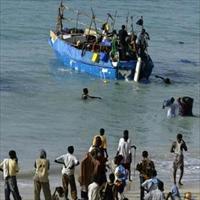SOMALIA-YEMEN: Deadly migration to Yemen continues, despite risks

Somali and Ethiopian migrants continue to set out to Yemen from Somalia's self-declared autonomous region of Puntland, despite the deadly risks and warnings from aid agencies, local sources told IRIN on 21 December.
"As we speak, there is a boat getting ready to depart for Yemen with about 200 migrants," said Abdirazaq Omar Osman, a journalist in Bosasso, the Puntland commercial capital.
He said the boat would most likely leave on 21 December "if it has not already left."
A week earlier at least 100 migrants died trying to reach Yemen.
"There were two boats that left Puntland on 9 and 10 December. Both capsized and many, if not most, of those on board perished," said Osman, who visited one of the beach ports used by the smugglers.
He said reports reaching Bosasso indicate that 60 passengers in one boat and 50 in the other had died, "with many missing and presumed dead."
He said the smugglers were using bigger but older boats from Yemen. "These are boats owned by Yemenis but operated by their Somali partners."
Each migrant is charged US $70 for the trip.
On 19 December, the UN refugee agency, UNHCR, said: "One out of every 20 people who set out in rickety boats across the Gulf of Aden this year has perished."
The agency said at least 28,000 people had made the perilous voyage to Yemen in 2007. Of that number, "more than 1,400 have died, killed by smugglers or drowned at sea."
UNHCR has begun an advocacy campaign in the Horn of Africa region to inform potential migrants about the perils of crossing illegally into Yemen.
Osman said awareness-raising campaigns for potential migrants were useful but would not deter many.
"It may work with Somalis from the south, who are more likely to stay in Somalia if they get some help, but I doubt very much if it will have any effect on the more desperate ones from Ethiopia," he said. "These are desperate people who will do anything to better their lives. They listen to the odd ones who makes it to Saudi Arabia and think they also can make it."
Since Yemen itself offers few job prospects for the migrants, most head on to Saudi Arabia or other Gulf states, where the demand for menial labour is much greater.
 Back and Next - Back and Next
Back and Next - Back and Next See Also - See Also
See Also - See Also